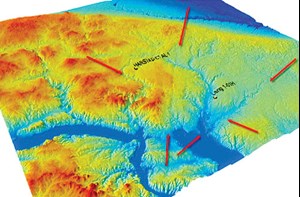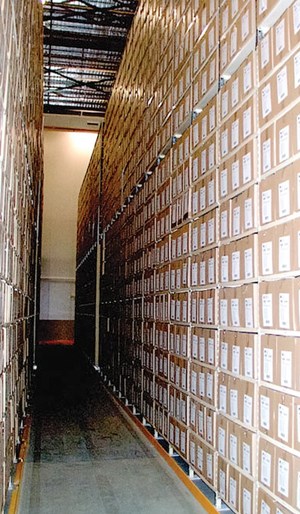Leverage people and data to prosper in lean times
As painful as they seem, downturns can be opportunities. During booms, leasing and acquisition costs soar. Actually, there are better odds of finding a good deal in a down market than in a hotly competitive one. But, you need to know which properties are the most undervalued. Integrated earth science, reservoir properties and dynamics are essential to determining which acreage offers the most upside.
Leveraging people. In tough times, it is important to keep employees energized and engaged. People with time on their hands tend to worry. If they are fully engaged in a data analysis project, people are less likely to obsess over the implications of an economic downturn.
The costs of formation evaluation and reservoir engineering studies are small change compared to the expenditures for drilling and completion, but can yield big dividends. Highly skilled earth scientists and reservoir engineers are valuable and hard to replace when business recovers. Keeping the best talent busy interpreting existing data will help improve the understanding of which factors make some wells and locations better than others.
While individual experts can produce valuable insights, integrated multi-disciplinary teams often demonstrate the truth of the idea that a good team is more than just the sum of its parts. The key is good communication among the experts. Each specialized discipline tends to think differently, which can create barriers to the exchange of ideas within the group. The team leader must be a good facilitator, who can help the members understand each other. With good interaction and exchange of ideas, a team is more likely to develop new concepts and create a competitive advantage.
Leveraging existing data. Field samples and data are valuable resources that can easily go missing or be destroyed. Within a company, especially during the frantic pace of a boom, data can be fragmented, with no one knowing what information exists. Now is the time to inventory what you have.
If people are afraid of losing their jobs, the risk of losing precious data is increased. Someone who feels that he or she has little future with an employer is less motivated to carefully, and accurately, document and archive important information. Even when employees are diligent, significant data resources tend to go astray during a merger or staff reduction.
In addition to proprietary information, an abundance of excellent data are available at little cost in the public domain. There are numerous accessible data libraries. In looking for public domain data, it is important to utilize resources like regional repositories that compile information on particular geographic areas, as well as archives that gather information generated by specific technologies.
Many countries have national data repositories that include well logs, well reports, core samples, seismic surveys and production data. One of the largest in the world is the Geoscience Australia Data Repository, which has seismic exploration data, cores, cuttings and reports, Fig. 1. In some Canadian provinces, companies are required to submit drill cuttings and cores from wells drilled in the province to the provincial oil and gas commission. Core and cuttings samples held by the Canadian province of British Columbia are available not only for examination, but also may be removed temporarily for testing.
Some U.S. states also mandate that cores be transferred to a state facility. The North Dakota Geological Survey’s Wilson M. Laird Core and Sample Library has about 70 mi of oil well cores and 34,000 boxes of drill cuttings, and also a large collection of water well cores and samples.2 In looking for new opportunities or ways to enhance existing properties, these collections are of great value.

Satellites and airborne platforms should not be overlooked for regional context in onshore studies. Free and low-cost Landsat3 and ASTER (Advanced Spaceborne Thermal Emission and Reflection Radiometer) images provide information on vegetation, surface mineralogy and topography. One way to use this type of remote sensing data is to map fracture networks and major regional structures that can enhance permeability and influence the thermal history (and hence the maturity of the kerogen and hydrocarbon properties) of an area, Fig. 2.
Gravity and magnetic data are available at low cost from potential field databases.4 Integrated interpretation of gravity and magnetic data can be used to determine whether surface lineaments are superficial features, or if they are fractures or faults that extend to the basement. Deep-seated features can serve as conduits, enabling the flow of hot fluids from igneous intrusions into the sedimentary section. The convective heat flow from the hot fluid locally enhances the thermal maturity of kerogen-rich shales. If the convective heat flow advances the thermal maturity of the shale from the early oil window to peak oil generation, a sweet spot is formed.5
While those working in formation evaluation can never have enough core samples, it is amazing what can be learned from old, dry scraps of core and sidewall samples. Even if cores are badly cracked, documentation of fractures filled or coated with natural mineral cements can be valuable in assessing the natural fractures. In many low-permeability rocks, natural fractures that appear to be fully cemented can be the most permeable part of the rock.
Old samples are also valuable for geochemistry studies. Analysis yields more than just whether the organic matter is in the oil window. Total organic content can be determined, along with whether that material is prone to produce oil as opposed to gas. Assessment of the organic maturity provides insight into the gas-oil ratio and the viscosity of the oil in the formation.
In some places, such as Canada, a lot of detailed well treatment and production data are in the public domain. Reservoir engineers can use this type of data to assess which fracturing treatments are most effective in different types of producing zones. This is advantageous in identifying zones that could benefit from recompletion. Large data sets may also be used to better predict decline rates, which are critical for determining economics and which properties could be attractive acquisitions.
These are just a few examples of how pre-existing data can be leveraged. As in any evaluation, the knowledge and skill of the people involved makes a big difference. We should never forget that oil is found first in someone’s mind. Regional and technical experts are essential assets. ![]()
REFERENCES
- http://www.ga.gov.au/ausgeonews/ausgeonews200709/remastering.jsp.
- https://www.dmr.nd.gov/ndgs/Offices/Core_Library.
- https://lta.cr.usgs.gov/TM.
- For example, http://crustal.usgs.gov/projects/natlgeophydb/ and http://bgi.omp.obs-mip.fr/data-products/Gravity-Databases).
- Edman, J., E. Sprunt, J. Newman, M. Ruder and J. Ellis, “More efficient and cost effective ways of evaluating and high grading unconventional plays,” SPE doi:10.15530/urtec-2014-1934251, Aug. 28, 2014.
- Shale technology: Bayesian variable pressure decline-curve analysis for shale gas wells (March 2024)
- EOR/IOR technology: Advanced shale oil EOR methods for the DJ basin (May 2023)
- The last barrel (April 2023)
- What's new in production (April 2023)
- ShaleTech- Permian shales: Production hits new high amidst talk of looming plateau (April 2023)
- ShaleTech: Marcellus-Utica Shales (February 2023)
- Applying ultra-deep LWD resistivity technology successfully in a SAGD operation (May 2019)
- Adoption of wireless intelligent completions advances (May 2019)
- Majors double down as takeaway crunch eases (April 2019)
- What’s new in well logging and formation evaluation (April 2019)
- Qualification of a 20,000-psi subsea BOP: A collaborative approach (February 2019)
- ConocoPhillips’ Greg Leveille sees rapid trajectory of technical advancement continuing (February 2019)



